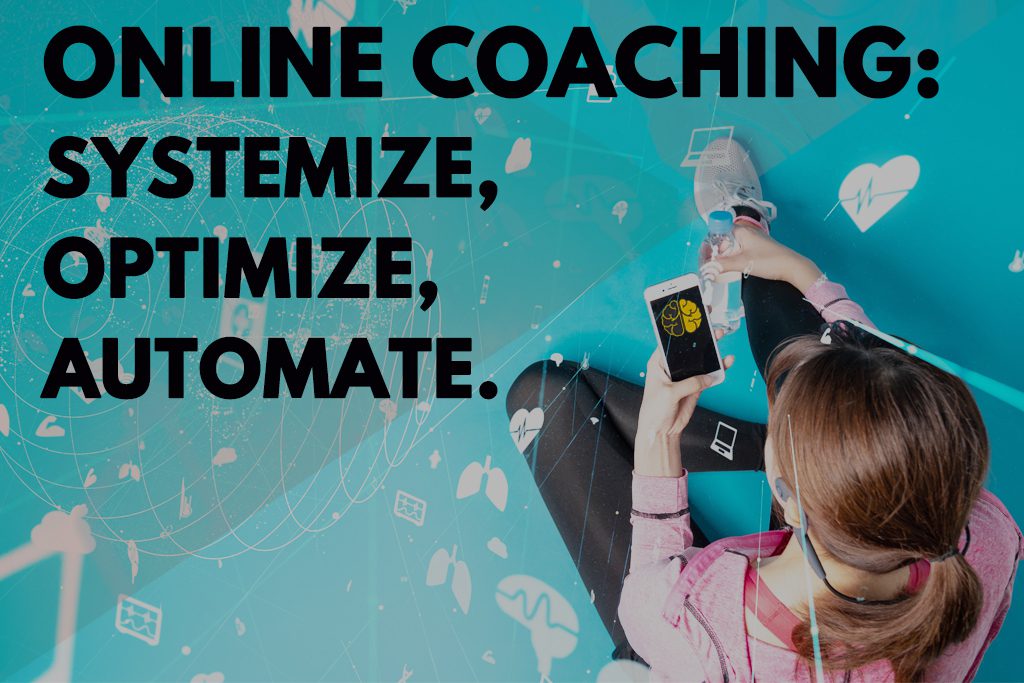Doesn’t it feel like you’ve started a new business?
Even though your audience is the same, you’ve gone from “pick up your barbell like this” to “here’s how this workout will help with your goals today.” You’ve switched from coaching groups to coaching individuals through customization or personalization. And even if you’re still delivering group classes on Zoom, your business today is different than what it was on March 1.
That means you’re back in Founder Phase again—the first phase. (I wrote about the four phases of the entrepreneur’s journey in my fourth book, “Founder, Farmer, Tinker, Thief.”)
In this stage, the best way to move your business forward is to follow the three-step process that Founders follow: systemize, optimize and then automate.
Systemize
First, you have to deliver your new service by yourself. You have to know it inside and out.
But you’re not going to be the primary delivery person forever. So as you deliver, you’re going to record everything. You’re going to write the systems that replace you. You’re going to leave “deep tracks” for others to follow.
Start by writing down “here’s when I post the workout” or the very first step you take each day. For me, I start with the absolute basics: “I turn on my computer.”
Test your systems with someone else: Can he or she follow your instructions to deliver your service exactly the way you do it? If so, move on to Step 2. If the person can’t, keep training until you find success. (We call this the “hit-by-a-bus test”: If you were hit by a bus today, could someone deliver your service without your clients noticing that you’re gone?)
Optimize
After you’ve tested your systems and proven them to be replicable every single time, you can edit them.
I say “edit” because editing your systems is like editing a book: You look for ways to deliver the same service with less effort. You look for efficiencies and cut for clarity.
For me, this usually means asking something like this: “If I put this instruction in the first email every client gets automatically, will it save me having to answer a question individually every time?”
For example, when I scaled Two-Brain Business from 10 clients to 50, I asked myself, “What are the most common things I’m telling everyone?” And then I put those lessons into video form. When new clients got on a call, most of the “teaching” was already done, and we could work together on implementation.
For you, this might mean recording movement demos or sending instructions to set up MyFitnessPal.
It could also mean removing things that aren’t absolutely necessary. For example, I used to send every client a six-page PDF on the Zone Diet. Now I just say, “Here are your macros. Here’s the benefit of eating this way.” They take action faster and make gains sooner.
Automate
Only after testing your processes and optimizing them should you turn to automation online.
Many coaches actually lose clients because they rely too much on automated texts, emails and prebuilt programs.
Instead of sending a personal text, they set up an automation: “Hey, it’s me. Checking in on you … .” This is sometimes playing with fire. If you send a text about “top tricks to lose weight this weekend” and your client doesn’t care about weight loss, it’s going to become quickly obvious that he or she is not getting your personal attention. Don’t let automations make you lazy in relationships.
Automation can mean software. There are certain instances where you can automate your client journey: housekeeping items (“Here’s your waiver!”), program introductions, FAQs and weekly reminders for routine tasks (“Don’t forget to take a picture of your meal today!”).
Automation can also mean routine tasks for humans. For example, “Text 20 former members every Friday to see how they’re doing.” The task is automated—you don’t have to tell anyone to do it—but not computerized. See the difference?
When automating through a human, you want to put the best human for the task in that role. Not everyone is great at communicating through text, for example. If your coach can’t send a text without spelling mistakes, he or she is not a great fit. I’m not great at using emojis or GIFs, so I have others do the texting for me.
The key to all of this: Don’t jump to automation too fast. Telling a staff person to “text everyone every day” won’t work; you need to test the system yourself, record what works, optimize your delivery and then hand it off. It’s just like any other business process!
Online but not out of Touch
The great news: Online coaching allows you to move really quickly through the systemize-optimize-automate sequence.
Record your processes on video, share them with your staff and update based on your clients’ results.
Remember: You’re selling relationships more than ever. Don’t try to replace yourself with a robot!

